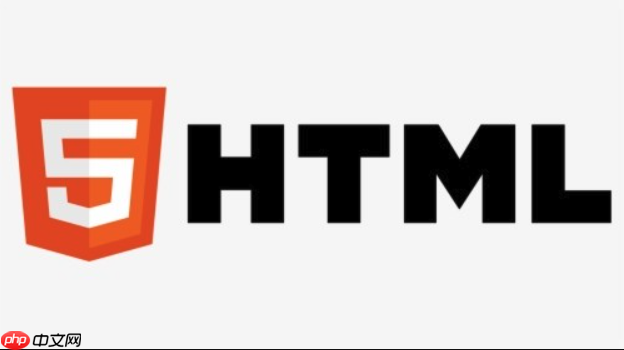fetch api 是 ajax 的替代方案,基于 promise 提供更简洁、强大的网络请求能力。它通过 fetch() 函数发起请求,返回 promise 并支持 json()、text() 等方法解析响应;其优势包括告别回调地狱、流式处理、cors 增强控制、模块化设计;劣势为兼容性较差、http 错误需手动检测;适合现代 web 应用、流式下载及精细 cors 控制场景;可使用 async/await 进一步简化代码;同时支持通过 abortcontroller 取消请求,提升性能与用户体验。

Fetch API提供了一个更强大、更灵活的方式来进行网络请求,它解决了Ajax的一些固有问题,例如回调地狱和配置复杂性。Fetch基于Promise,使得异步操作更加简洁易读,并且提供了更丰富的功能,例如流式处理和跨域资源共享(CORS)的增强控制。

Fetch API 是现代Web开发的基石,它不仅仅是Ajax的替代品,更是一种范式的转变。
解决方案
立即学习“前端免费学习笔记(深入)”;

Fetch API的核心在于fetch()函数,它接收一个URL作为参数,并返回一个Promise。这个Promise会在服务器响应后resolve,返回一个Response对象。你可以使用Response对象的方法,如json()、text()等,来解析响应内容。
基本用法:

fetch('https://api.example.com/data')
.then(response => {
if (!response.ok) {
throw new Error(`HTTP error! status: ${response.status}`);
}
return response.json(); // 或者 response.text(),取决于响应类型
})
.then(data => {
console.log('Data received:', data);
})
.catch(error => {
console.error('There was a problem with the fetch operation:', error);
});替代Ajax的关键点:
then()和catch()处理异步结果。XMLHttpRequest,Fetch API的代码更加简洁易懂。credentials: 'include'。fetch('https://api.example.com/data', {
credentials: 'include'
})
.then(/* ... */);副标题1
Fetch API如何处理复杂的请求头和请求体?
Fetch API允许你通过Headers对象来设置请求头,并通过body参数来发送请求体。
请求头:
const headers = new Headers({
'Content-Type': 'application/json',
'Authorization': 'Bearer your_token'
});
fetch('https://api.example.com/data', {
method: 'POST',
headers: headers,
body: JSON.stringify({ key: 'value' })
})
.then(/* ... */);请求体:
body参数可以是字符串、Blob、ArrayBuffer、FormData等类型。
JSON.stringify()将对象转换为JSON字符串。const formData = new FormData();
formData.append('username', 'JohnDoe');
formData.append('avatar', fileInput.files[0]); // fileInput 是 <input type="file"> 元素
fetch('https://api.example.com/upload', {
method: 'POST',
body: formData
})
.then(/* ... */);副标题2
Fetch API相比Ajax有哪些优势和劣势?什么情况下应该选择Fetch?
优势:
劣势:
fetch()函数只有在网络错误时才会reject Promise,HTTP错误状态码(如404、500)不会导致reject。需要手动检查response.ok属性。选择Fetch的时机:
仍然使用Ajax的时机:
副标题3
如何使用async/await简化Fetch API的代码?
async/await是ES2017引入的语法糖,可以进一步简化Fetch API的代码,使其更加易读易懂。
async function fetchData() {
try {
const response = await fetch('https://api.example.com/data');
if (!response.ok) {
throw new Error(`HTTP error! status: ${response.status}`);
}
const data = await response.json();
console.log('Data received:', data);
} catch (error) {
console.error('There was a problem with the fetch operation:', error);
}
}
fetchData();使用async/await后,代码看起来更像同步代码,更容易理解和维护。 错误处理也更加清晰,可以使用try...catch语句来捕获异步操作中的错误。
副标题4
Fetch API中的AbortController是什么?如何取消Fetch请求?
AbortController 允许你中止一个或多个 Web 请求。 这对于避免在用户导航离开页面或不再需要结果时浪费带宽非常有用。
const controller = new AbortController();
const signal = controller.signal;
fetch('https://api.example.com/data', { signal })
.then(response => {
// ...
})
.catch(error => {
if (error.name === 'AbortError') {
console.log('Fetch aborted');
} else {
console.error('Fetch error:', error);
}
});
// 取消请求
controller.abort();AbortController创建了一个信号(signal),将其传递给 fetch 函数的配置对象。调用 controller.abort() 会触发 AbortError 异常,从而取消请求。 这在处理长时间运行的请求或用户取消操作时非常有用。
以上就是HTML5的Fetch API有什么用?如何替代Ajax?的详细内容,更多请关注php中文网其它相关文章!

HTML怎么学习?HTML怎么入门?HTML在哪学?HTML怎么学才快?不用担心,这里为大家提供了HTML速学教程(入门课程),有需要的小伙伴保存下载就能学习啦!

Copyright 2014-2025 https://www.php.cn/ All Rights Reserved | php.cn | 湘ICP备2023035733号